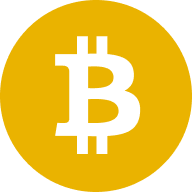Le BitTorrent (BTT) est une devise numérique qui a rapidement gagné en popularité sur le marché des cryptomonnaies. Il provient du réseau BitTorrent largement utilisé, connu pour le partage de fichiers en pair-à-pair.
Qu'est-ce que le BTT?
Le BTT est une cryptomonnaie introduite par BitTorrent en 2019. Il fonctionne comme un moyen de paiement au sein du réseau BitTorrent, permettant aux utilisateurs d'acheter des vitesses de téléchargement plus rapides avec du BTT. Il sert également de moyen de récompense pour les personnes qui contribuent à la capacité de stockage du réseau BitTorrent.
En tant que jeton TRC-10, le BTT fonctionne sur la blockchain Tron. Tron est une plateforme blockchain conçue pour offrir une évolutivité, une décentralisation et des capacités haute performance.
L'équipe BitTorrent
Bram Cohen et Ashwin Navin ont fondé le protocole BitTorrent et créé BitTorrent, Inc en 2004. Suite à l'acquisition de BitTorrent par Tron, Justin Sun, fondateur de Tron, occupe le poste de CEO de BitTorrent. En tant que jeune entrepreneur, Sun s'est rapidement imposé comme l'une des personnalités les plus accomplies de l'industrie de la blockchain. L'équipe de 53 personnes actuellement impliquée dans les aspects techniques du projet, les opérations et les mises à jour est principalement composée d'ingénieurs et de scientifiques travaillant aux États-Unis.
Comment fonctionne BitTorrent?
BitTorrent fonctionne en utilisant un réseau décentralisé de nœuds pour stocker et indexer des données. Les données peuvent inclure un large éventail d'informations, notamment des articles de blog, des mises à jour sur les réseaux sociaux et des transactions financières. Le réseau BitTorrent utilise un mécanisme de consensus de preuve d'enjeu (PoS) pour assurer la sécurité. Cela signifie que les nœuds reçoivent des récompenses en mettant en staking BTT pour sécuriser le réseau.
Les utilisateurs peuvent utiliser des jetons BTT pour accélérer leurs téléchargements lorsqu'ils téléchargent des fichiers à partir du réseau BitTorrent. La vitesse des téléchargements est directement proportionnelle au nombre de jetons BTT mis en mise en staking par un utilisateur.
Le jeton d'utilité de BitTorrent: BTT
Le BTT est le jeton d'utilité pour le réseau BitTorrent, fonctionnant sur la blockchain Tron en tant que jeton TRC-10. Il fonctionne principalement comme un moyen de paiement pour faciliter des téléchargements plus rapides sur le réseau BitTorrent.
Tokenomie du BTT
L'offre totale de jetons BTT est de 990 milliards. Sur ce total, 6 % ont été vendus lors de l'offre initiale de jetons (ICO), 2 % ont été alloués à l'équipe BitTorrent et 9 % ont été distribués aux investisseurs initiaux. Au fil du temps, les 83 % restants des jetons BTT seront distribués par le biais de diverses méthodes telles que le staking, les airdrops et les récompenses pour l'utilisation du réseau BitTorrent.
Comment mettre en staking des BTT
OKX propose plusieurs plans de staking pour le BTT. Pour mettre en staking BTT sur OKX, commencez par créer un compte OKX. Une fois connecté, accédez à OKX Earn. Recherchez "BTT" dans la barre de recherche et sélectionnez le plan de staking de votre choix. Ensuite, cliquez sur S'abonner. La durée pendant laquelle vos jetons BTT seront verrouillés dépend du plan de staking que vous choisissez. Pendant cette période, vous recevrez des jetons BTT supplémentaires en récompense.
Cas d'utilisation du BTT
Le BTT a plusieurs cas d'utilisation, notamment:
- Le BTT peut être utilisé pour acheter des vitesses de téléchargement plus rapides sur le réseau BitTorrent.
- Les utilisateurs peuvent gagner un revenu passif sous forme de jetons BTT en offrant de l'espace de stockage pour le réseau BitTorrent.
- Le BTT peut alimenter des applications décentralisées (dApps) sur le réseau BitTorrent, y compris le stockage de fichiers décentralisé, les jeux et la finance décentralisée (DeFi).
- Le BTT peut être mis en jeu pour gagner des jetons BTT supplémentaires en récompense. Le staking implique de verrouiller vos jetons BTT sur une plateforme de mise en jeu disponible, telle que OKX Earn, pour recevoir des récompenses en jetons.
Distribution du BTT
- La répartition des jetons BTT est la suivante:
- 6 % ont été vendus lors de l'offre initiale de jetons (ICO) en janvier 2019.
- L'équipe BitTorrent a reçu une part de 2 %.
- Les investisseurs initiaux ont reçu 9 %.
- Les 83 % restants seront distribués progressivement sous différentes formes telles que des récompenses de mise en jeu, des airdrops et des incitations à utiliser le réseau BitTorrent.
Plan d'expansion future de BitTorrent
L'équipe BitTorrent prévoit d'améliorer le réseau BitTorrent en introduisant de nouvelles fonctionnalités et en simplifiant la participation des utilisateurs. Cela implique d'améliorer la compatibilité avec des formats de fichier supplémentaires, d'améliorer la fonction de recherche de fichiers et de simplifier les capacités de partage de fichiers.
L'équipe BitTorrent vise à accroître l'utilisation du BTT en étendant son acceptation en tant que moyen de paiement. Une façon d'y parvenir est de conclure des partenariats avec des marchands et de simplifier le processus d'achat de BTT pour les utilisateurs.
L'équipe derrière BitTorrent prévoit également de se développer sur de nouveaux marchés, notamment en Asie, en Afrique et en Amérique latine.















Données sociales